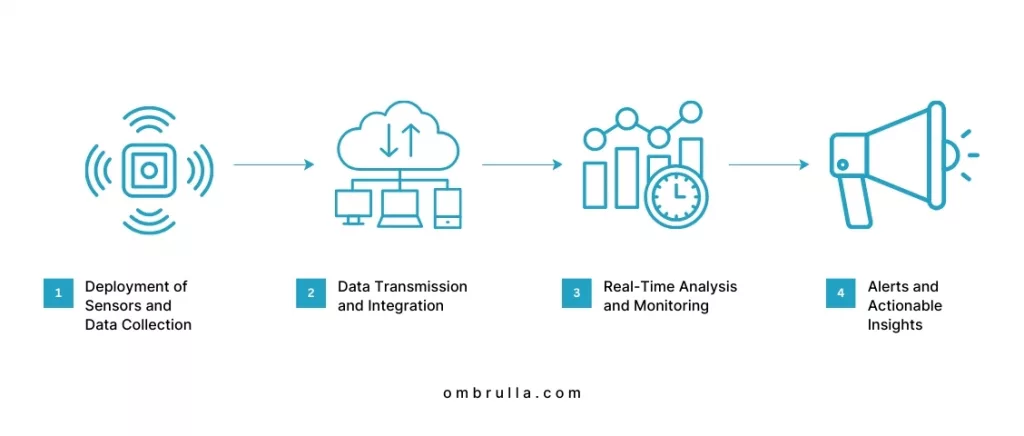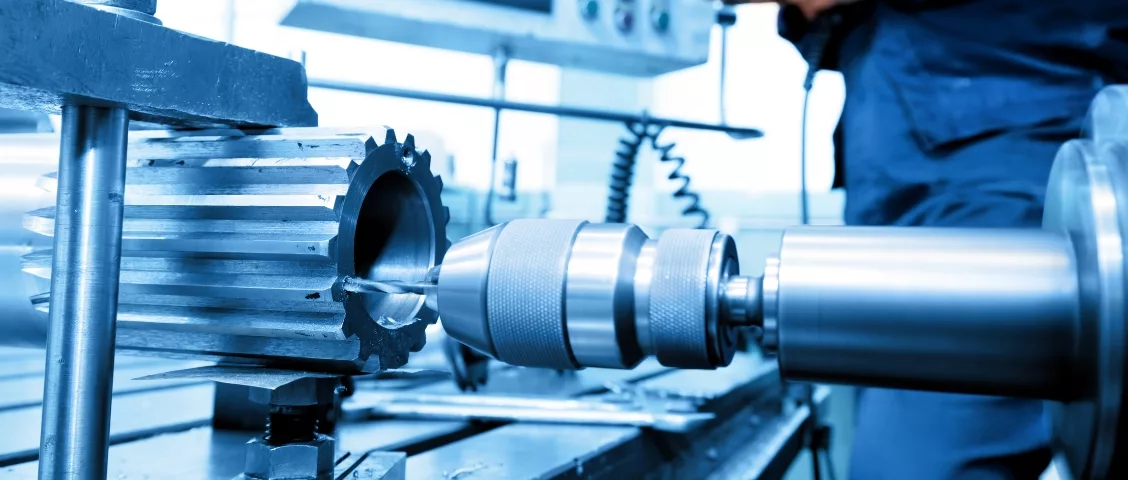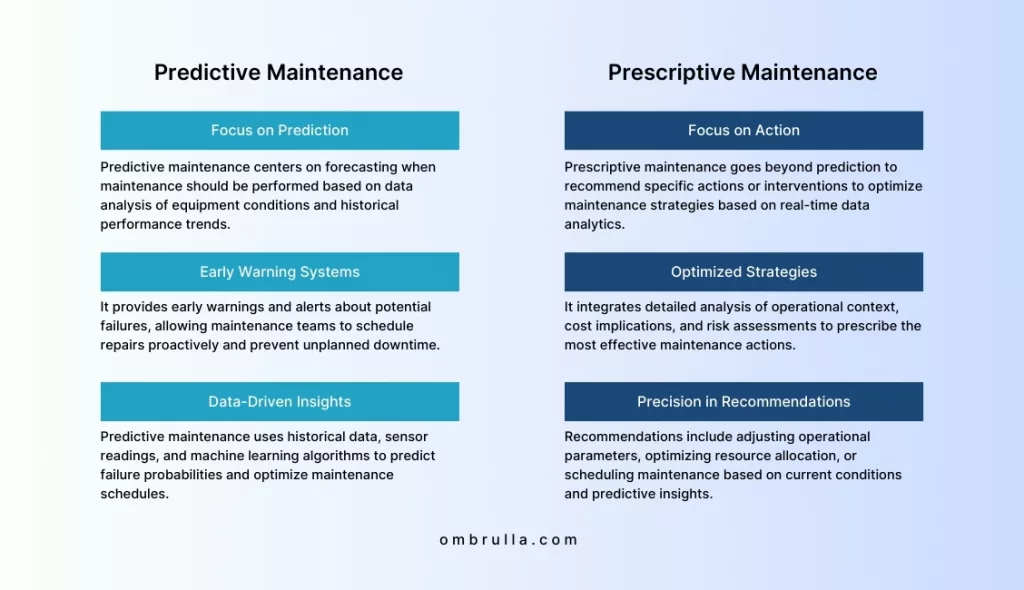
“Unexpected machine failures can halt production, causing significant financial losses and frustrating delays.”
Imagine a factory where machines break down frequently, disrupting schedules and increasing repair costs. The maintenance team struggles to predict issues before they happen, leading to reactive fixes. This lack of foresight results in inefficient operations and dissatisfied customers.
Transitioning to asset performance management software can transform this scenario. Predictive maintenance systems analyze data to foresee potential problems. IoT asset management allows for continuous asset health monitoring and real-time insights. Equipment tracking becomes streamlined, reducing unexpected downtime and optimizing maintenance schedules.
Furthermore, asset performance management enhances operational efficiency. With asset tracking, companies gain control over their equipment lifecycle. Predictive maintenance systems extend machine lifespan and minimize breakdowns. IoT asset management ensures machines operate at peak performance, leading to increased productivity.
Embracing asset performance management software is vital. Businesses can prevent costly machine failures and maintain smooth operations. Real-time asset health monitoring and predictive maintenance systems are game changers. Efficient asset tracking and equipment tracking ensure maximum uptime and reduced costs.
Table of Content
- Enhance Factory’s Efficiency with Real-Time Monitoring.
- Stay Ahead of Breakdowns with Predictive Maintenance.
- Maximize Your Productivity with Increased Uptime.
- Optimize Maintenance with Prescriptive Maintenance.
- Achieve Peak Efficiency with Enhanced Performance.
- Proactively Secure Your Operations with Anomaly Detection.
- Streamline Operations with Improved Resource Management.
- Drive Strategic Insights with Historical Data Analysis.
- Conclusion.
Enhance Factory’s Efficiency with Real-Time Monitoring

1. Continuous Data Collection
Real-time monitoring is a crucial component of asset performance management software.
Continuous data collection allows for 24/7 monitoring of machine status.
This constant oversight ensures no abnormality goes unnoticed. By leveraging IoT asset management, businesses can maintain optimal equipment performance.
Example: Imagine a factory where sensors on machines collect data around the clock. For example, temperature and vibration levels are monitored continuously. Any deviations from the norm are instantly flagged. This data helps predict when a machine might need maintenance before it fails.
2. Instant Alerts
Instant alerts provide immediate notifications of any issues.
This feature enables swift action to prevent potential failures. Predictive maintenance systems rely on these alerts for timely intervention.
Consequently, asset tracking and asset health monitoring become more effective and reliable.
Example: Consider a manufacturing plant where a machine’s temperature suddenly spikes. The asset performance management software immediately sends an alert to the maintenance team. They can quickly address the issue before it leads to a breakdown. This rapid response prevents costly downtime.
3. Remote Access
Moreover, remote access allows managers to view machine status from anywhere.
This capability enhances decision-making and operational efficiency. Equipment tracking becomes easier, reducing the need for on-site inspections.
IoT asset management ensures that asset performance management is always at your fingertips.
Example: In a distributed manufacturing setup, managers can view machine status from anywhere. For instance, a manager on a business trip can check the operational status of all machines via a mobile app. This access ensures continuous oversight and timely decision-making. It significantly enhances asset tracking and management.
4. Visual Representation of real-time data
In addition, the visual representation of real-time data simplifies monitoring.
A sensor icon connected to a smartphone offers a clear view of machine health.
This visualization aids in quick assessments and responsive actions. Ultimately, it strengthens asset performance management and predictive maintenance systems.
Example: Picture a dashboard with a sensor icon connected to a smartphone. This visual display shows real-time data on machine status, including temperature, vibration, and operational hours. It provides a clear and immediate overview of the factory’s operational health.
Stay Ahead of Breakdowns with Predictive Maintenance

Take control of your operations with predictive maintenance
1. Failure Prediction
Predictive maintenance is a vital aspect of asset performance management software.
AI analyzes data to predict potential failures before they occur. This proactive approach allows for early intervention and problem resolution.
Consequently, asset tracking and asset health monitoring improve significantly.
Example: In an automotive plant, AI analyzes machine data to predict potential failures. For instance, a conveyor belt shows signs of wear that could lead to failure. The predictive maintenance system identifies this trend early. Maintenance can be scheduled to replace the belt before it breaks down.
2. Scheduled Maintenance

Scheduled maintenance ensures timely repairs, preventing unexpected breakdowns.
With predictive maintenance systems, maintenance tasks are planned efficiently. This reduces downtime and keeps machines running smoothly.
IoT asset management plays a key role in scheduling and executing these repairs.
Example: Imagine an HVAC system in a large office building. The asset performance management software schedules regular maintenance based on usage patterns and wear rates. This proactive approach prevents unexpected breakdowns, ensuring a comfortable work environment.
3. Extended Equipment Life
Regular maintenance extends the lifespan of machines, ensuring long-term reliability.
Asset performance management focuses on sustaining equipment health through consistent care. This approach minimizes costly replacements and maximizes return on investment.
Equipment tracking becomes more accurate with routine checks and updates.
Example: Consider a fleet of delivery trucks. Regular maintenance based on predictive analysis extends their lifespan. For example, oil changes and tire rotations are scheduled precisely when needed. This keeps the trucks running efficiently for longer periods.
4. Visual Representation
A calendar icon with scheduled maintenance dates provides a clear visual aid.
This helps in organizing and prioritizing maintenance tasks. It also facilitates better communication within the maintenance team.
Ultimately, predictive maintenance systems enhance asset performance management and operational efficiency.
Example: A calendar icon with scheduled maintenance dates helps visualize upcoming maintenance tasks. This visual cue aids in planning and ensures that no maintenance activity is overlooked.
Maximize Productivity with Increased Uptime

Keep your operations running smoothly and efficiently.
1. Reduced Downtime
Reducing downtime is essential for maximizing productivity.
By minimizing unexpected machine failures, asset performance management software keeps operations running smoothly. Optimal operation ensures machines work at peak efficiency, reducing delays.
Fast issue resolution, enabled by IoT asset management, quickly identifies and fixes problems.
Example: In a production line, predictive maintenance systems minimize unexpected machine failures. For example, by replacing worn-out parts before they fail, the line runs smoothly. This reduces the frequency of stoppages and boosts overall productivity.
2. Optimal Operation
Scheduled maintenance further supports continuous operation. Predictive maintenance systems play a crucial role in this process.
They enable timely repairs before minor issues escalate. This proactive approach leads to increased uptime and improved asset performance management.
Example: Consider a food processing plant where machines operate at peak efficiency. Asset performance management software ensures that all equipment is calibrated and maintained properly. This optimal operation improves product quality and output.
3. Fast Issue Resolution
Asset tracking and asset health monitoring are integral to this strategy. They provide real-time insights into machine conditions.
Equipment tracking becomes more efficient with continuous data flow.
As a result, companies can maintain high operational standards and productivity.
Example: In a chemical plant, any detected anomalies are swiftly addressed. For example, a pressure valve malfunction triggers an immediate alert. The maintenance team quickly identifies and fixes the issue, minimizing downtime.
4. Visual Representation
A visual representation of a clock icon showing increased uptime underscores this benefit.
It symbolizes the continuous, efficient operation of machinery. This visual cue helps in communicating the value of increased uptime.
Ultimately, it highlights the effectiveness of asset performance management software.
Example: A clock icon showing increased uptime visually represents the continuous and efficient operation of machinery. It highlights the benefits of reduced downtime and swift issue resolution.
Optimize Maintenance with Prescriptive Maintenance

1. Advanced Analytics for Proactive Insights
Prescriptive maintenance leverages advanced analytics to provide proactive insights. These insights guide maintenance actions before issues escalate.
By analyzing data from various sources, the system can recommend specific actions.
This feature helps prevent costly breakdowns and extends equipment life.
Example: In a manufacturing plant, advanced analytics identify patterns of wear in machinery. The system recommends specific maintenance tasks to prevent future failures. This proactive approach ensures smooth operations and reduces unexpected downtime. Prescriptive maintenance enhances the reliability of asset performance management.
2. Automated Decision-Making
Automated decision-making is a crucial feature of prescriptive maintenance. The system can automatically schedule and prioritize maintenance tasks.
This ensures that the most critical issues are addressed promptly.
Automation reduces the need for manual intervention, improving efficiency and accuracy.
Example: In a logistics company, the system automatically schedules maintenance for high-usage vehicles. It prioritizes tasks based on the severity of detected issues. This automation ensures timely maintenance and minimizes disruptions to operations. Prescriptive maintenance streamlines maintenance processes and boosts productivity.
3. Capital Expenditure Planning
Prescriptive maintenance identifies capital expenditure requirements well in advance.
It serves as a digital testing environment, simulating the impact of adding new equipment.
This capability allows enterprises to time purchases and acquisitions more economically, ensuring better financial planning.
Example: In a power plant, prescriptive maintenance tools simulate the addition of a new turbine. The simulation results show the optimal time for the purchase to align with operational needs. This foresight allows the plant to plan the acquisition more economically, avoiding unplanned expenses. Capital expenditure planning ensures better budget management and resource allocation.
Achieve Peak Efficiency with Enhanced Performance

Unlock your full potential today: Implement APM Software to achieve peak efficiency
1. Optimal Operation
Enhanced performance is a key goal of asset performance management software. Ensuring machines operate at peak efficiency is vital.
Predictive maintenance systems provide data-driven insights for performance improvements.
This leads to more informed decision-making and optimized operations.
Example: In a semiconductor manufacturing plant, machines operate at peak efficiency. For example, regular calibration and maintenance ensure high precision and minimal defects. This leads to higher productivity and product quality.
2. Data-Driven Decisions
Data-driven decisions are another critical aspect. Insights gained from asset performance management drive continuous improvement.
IoT asset management facilitates the collection and analysis of performance data.
This approach leads to sustained enhancements in machine operation.
Example: A logistics company uses performance data to make informed decisions. For instance, analyzing fuel consumption data helps optimize delivery routes. This data-driven approach improves operational efficiency and reduces costs.
3. Performance Tracking
Continuous performance tracking allows for regular assessment of machine health.
Asset tracking and asset health monitoring are essential in this process. They provide the necessary data for ongoing evaluations.
Equipment tracking ensures that all machinery is performing optimally.
Example: In a power plant, continuous assessment of machine health is crucial. For example, monitoring turbine performance helps identify and address issues early. This continuous tracking ensures reliable and efficient power generation.
4. Visual Representation
A performance graph with an upward trend visually represents enhanced performance.
It symbolizes growth and improvement. This visual aid communicates the positive impact of predictive maintenance systems.
It highlights the effectiveness of asset performance management software in achieving better results.
Example: A performance graph with an upward trend visually represents enhanced performance. It symbolizes the continuous improvement in machine operation and overall productivity.
Proactively Secure Operations with Anomaly Detection

Identify and Resolve Issues before they impact your Asset Performance.
1. Machine Learning Algorithms for Pattern Recognition
Advanced anomaly detection utilizes machine learning algorithms for pattern recognition.
These algorithms analyze historical and real-time data to learn normal behavior. They can detect subtle deviations that may indicate anomalies.
Machine learning enables adaptive detection that improves accuracy over time.
Example: In industrial machinery, anomaly detection algorithms analyze sensor data to predict equipment failures. By learning normal operational patterns, the system can identify anomalies like abnormal vibrations or temperature fluctuations. This early warning system prevents breakdowns and optimizes maintenance schedules.
2. Root Cause Analysis and Diagnostic Insights
Anomaly detection systems provide root cause analysis to understand why anomalies occur.
They offer diagnostic insights into underlying issues that may not be immediately apparent.
This feature helps maintenance teams pinpoint the exact source of anomalies and take corrective actions effectively.
Example: In a manufacturing facility, anomaly detection identifies irregularities in product quality metrics. Through root cause analysis, it discovers a malfunctioning component in the production line. Maintenance teams then replace the faulty part, ensuring consistent product quality. Anomaly detection enhances operational reliability and efficiency.
3. Proactive Troubleshooting
Anomaly detection facilitates proactive troubleshooting by identifying irregularities before they escalate into significant issues.
By continuously monitoring data and detecting deviations from the norm, it enables early intervention. This proactive approach minimizes the risk of unexpected failures and reduces downtime.
Anomaly detection systems thus enhance the reliability and efficiency of operations.
Example: In a data center, Asset Performance Management Software monitor server performance metrics such as temperature and load. When an irregular spike in temperature is detected, the system triggers an alert for the IT team. The team then investigates and resolves the issue before it causes a server failure. Proactive troubleshooting through anomaly detection ensures continuous and reliable data center operations.
Streamline Operations with Improved Resource Management

Utilize Asset Performance Management Software for optimal Resource Management.
1. Inventory Control
Efficient resource management is vital for operational success. Inventory control monitors the availability of spare parts.
This ensures that necessary resources are always on hand.
Predictive maintenance systems play a key role in this aspect.
Example: In a manufacturing facility, monitoring spare parts availability is crucial. For example, knowing the exact stock levels of critical components prevents production delays. Asset tracking and predictive maintenance systems help maintain optimal inventory levels.
2. Efficient Resource Use
Efficient resource use is another critical factor. Optimizing resource allocation reduces waste and increases efficiency.
Asset performance management software aids in this optimization.
IoT asset management ensures that resources are used effectively.
Example: A construction company optimizes the use of its equipment and materials. For instance, scheduling equipment use based on project timelines reduces idle time. This efficient resource use lowers costs and improves project outcomes.
3. Waste Reduction
Waste reduction is achieved through timely maintenance. By addressing issues early, unnecessary resource consumption is minimized.
Asset tracking and asset health monitoring contribute to this goal. They ensure that maintenance is performed only when needed.
Example: In a food processing plant, timely maintenance minimizes waste. For example, maintaining equipment to prevent leaks and spills reduces product loss. This proactive approach contributes to sustainability and cost savings.
4. Visual Representation
An inventory list icon with check marks visually represents improved resource management. It signifies organization and efficiency.
This visual aid helps in understanding the benefits of effective resource management.
It highlights the role of asset performance management software in achieving these improvements.
Example: An inventory list icon with check marks visually represents improved resource management. It signifies organization, efficiency, and optimal use of resources.
Drive Strategic Insights with Historical Data Analysis

Unlock the Power of Past Performance for Future Success!
1. Trend Analysis
Historical data analysis is essential for continuous improvement. Analyzing past data helps in identifying patterns and trends.
Predictive maintenance systems use this information for better forecasting.
This leads to more accurate asset performance management.
Example: In an automotive manufacturing plant, analyzing past data helps identify patterns. For example, tracking wear and tear on assembly line components predicts future maintenance needs. This trend analysis improves maintenance planning.
2. Lifecycle Management
Lifecycle management is another crucial aspect. Historical data helps in planning the entire machine lifecycle.
Asset tracking and asset health monitoring provide the necessary data.
Equipment tracking ensures that all historical information is accurate and up-to-date.
Example: A utility company uses historical data for planning equipment lifecycle. For instance, data on transformer performance helps decide when to upgrade or replace units. This ensures reliable service and efficient asset performance management.
3. Performance Benchmarking
Performance benchmarking is achieved through historical data analysis. Comparing past and present performance helps in identifying areas for improvement.
IoT asset management facilitates this comparison. This leads to continuous enhancements in machine operation.
Example: In a semiconductor factory, comparing past and present performance identifies areas for improvement. For example, benchmarking machine efficiency over time reveals opportunities for optimization. This continuous improvement enhances overall productivity.
4. Visual Representation
A bar chart icon with historical data trends visually represents this analysis. It symbolizes the use of past data for future improvements.
This visual aid helps in understanding the importance of historical data.
It highlights the role of asset performance management software in leveraging this data for better results.
Example: A bar chart icon with historical data trends visually represents the use of past data for future improvements. It highlights the importance of leveraging historical data for better asset performance management.
Conclusion
In today’s competitive industrial landscape, preventing unexpected machine failures is crucial. Asset performance management software revolutionizes how businesses handle maintenance and operations. By leveraging predictive maintenance systems, companies can foresee potential issues and address them proactively. IoT asset management provides real-time insights and continuous asset health monitoring, ensuring machines run efficiently and breakdowns are minimized.
Transitioning to asset performance management offers substantial benefits. Businesses can optimize maintenance schedules, reduce repair costs, and extend the lifespan of their equipment. Real-time monitoring and efficient asset tracking streamline operations, leading to increased productivity and customer satisfaction. With these advanced tools, companies can maintain smooth, uninterrupted production, avoiding costly downtime and enhancing their overall operational efficiency.
Embracing asset performance management software is not just a strategic choice but a necessity for modern enterprises. Predictive maintenance, combined with IoT-enabled asset tracking, transforms reactive maintenance into a proactive strategy. This shift not only saves money but also boosts operational reliability and efficiency. In conclusion, investing in asset performance management software is a forward-thinking move that ensures long-term success and sustainability.

Leave a Reply